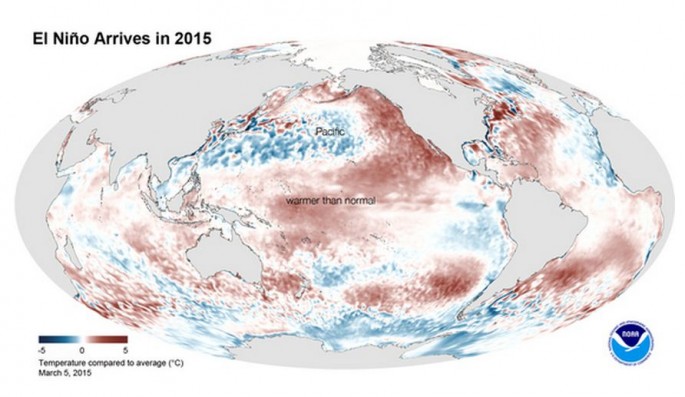The National Oceanic and Atmospheric Administration (NOAA) over the weekend officially declared El Niño is active in the United States.
Thankfully, however, this year's El Niño will be weaker than the last one and won't worsen existing weather, said NOAA.
El Niño is the warm phase of the El Niño Southern Oscillation (or ENSO) and is associated with a band of warm ocean water that develops in the central and east-central equatorial Pacific.
"Due to the weak strength of the El Niño, widespread or significant global weather pattern impacts are not anticipated," NOAA said, as quoted by the Weather Network.
"However, certain impacts often associated with El Niño may appear this spring in parts of the Northern Hemisphere, such as wetter-than-normal conditions along the U.S. Gulf Coast."
NOAA said there's a 60 percent chance El Niño could last through summer. There are very few chances this El Niño will be as dangerous as it was in 1998 when it first made headlines, said NOAA forecaster, Michelle L'Heureux.
El Niño, which usually brings strong rains, won't do so in drought stricken California. Some meteorologists said the event could change weather patterns in other regions across the world, however. It might also increase temperatures for the year.
A widely held view is El Niño makes extreme weather more frequent. Research has shown this isn't necessarily the case on the global scale, but it does make extremes more likely in some specific areas.



























